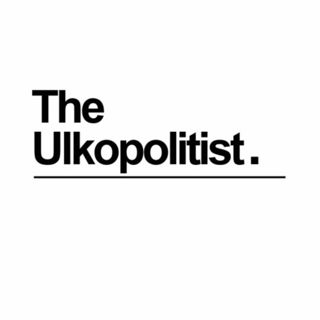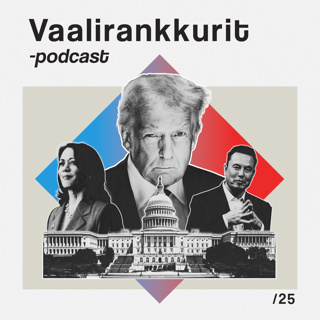
Fashion Industry Trends: Exclusive Collabs, Premiumization, and Agile Supply Chains
The global fashion industry has seen a wave of innovation and collaboration over the past 48 hours, marked by high-profile brand partnerships, rapid sell-outs, and fresh product drops. Standout collaborations like Ganni x New Balance, whose 1906L sneaker-loafer collection sold out immediately after its September 30 launch, reflect a demand for hybrid, easily styled products. Other headline partnerships include Microsoft x Crocs’ limited Windows XP edition, Adidas Originals x Wales Bonner’s Kareem Abdul-Jabbar tribute, and Valentino x Vans, bringing luxury into daily wear.Consumers are showing a clear preference for exclusive, nostalgia-driven releases, fast-fashion adaptability, and bold yet wearable luxury items. Recent launches have sold out in minutes, leading brands to lean into multi-platform teaser campaigns and influencer marketing to extend buzz. Market spectators note that sell-out speed has become a new barometer of success, altering how brands plan drops and restocks.Major players like Armani are reportedly courting investment interest from global beauty giants including L’Oréal, signaling potential shifts in industry power dynamics through minority stake sales. Meanwhile, Moncler is doubling down on creative collaborations, exemplified by its Moncler Genius x A$AP Rocky launch, which targets both streetwear and luxury buyers. On the supply front, American giants Wrangler and Filson have launched an outerwear line spanning accessible to heirloom price points, with jackets retailing from 180 to 750 US dollars, showing a concerted effort to broaden market reach amid inflation concerns.Supply chains are largely holding steady, although cost pressures exist as brands seek to offset rising material prices with high-demand exclusive products. Some Italian luxury labels are also returning to domestic manufacturing and rehiring displaced workers, as seen by a Bologna-based lingerie brand re-employing 200 staff after a 25 million euro acquisition.Compared to last month, the industry is trending further toward cross-category collaborations and premiumization, with price sensitivity influencing launches and marketing. Notably, Chicago’s Fashion Summit this week is drawing attention to digital innovation and regional talent, reflecting ongoing shifts in how brands engage with emerging markets.Fashion leaders are increasingly emphasizing limited-edition products, culturally resonant campaigns, and agile supply strategies to stay competitive in a market where consumer attention is fleeting and loyalty hinges on novelty and narrative.For great deals today, check out https://amzn.to/44ci4hQThis content was created in partnership and with the help of Artificial Intelligence AI
3 Loka 2min

Fashion's New Frontier: Navigating Shifts, Regulations, and Evolving Consumer Demands
In the past 48 hours, the global fashion industry has experienced dramatic shifts, reflecting a complex mix of recovery, new pressures, and evolving consumer preferences. The industry is still responding to the aftershocks of recent economic crises and facing a fragile recovery, especially in luxury markets. Brands like Hermès posted strong results this quarter, reporting a 9 percent revenue increase year over year, reaching 3.9 billion euros, driven by consistent demand for iconic items and a growing commitment to responsibly sourced materials. LVMH, another industry giant, saw a 7 to 9 percent drop in its fashion and leather goods revenue but has signaled resilience by reinvesting in product innovation and supply chain sustainability.A notable market disruption has come from regulatory changes. As of late August, the United States has eliminated the de minimis exemption on imports from all countries of origin, ending a policy that had allowed packages valued under 800 dollars to enter tariff-free. Fashion e-commerce platforms specializing in low-cost imports, such as Shein and Temu, are now facing tariffs ranging from 80 to 200 dollars per shipment. These measures have started to ripple through the market, prompting importers to rethink supply chains and, in some cases, relocate logistics hubs or raise prices. Supply chain uncertainties are further compounded by ongoing shifts in global trade policy and manufacturing sector contraction, with September’s ISM Manufacturing PMI at 49.1 percent, confirming another month of sector slowdown.Consumer behavior has shifted noticeably. There is heightened demand for sustainability, individualized experiences, and transparent practices. Online retail return rates remain high, costing UK retailers an estimated 27 billion pounds annually. Returns logistics represent a significant drag on profits, with processing costs per return ranging from 10 to 20 pounds, and many returned items from fast fashion never making it back to shelves before they lose value.Industry leaders are doubling down on both digital personalization and sustainability, with increased focus on circularity, resale, and climate initiatives. The race is now to blend tradition with innovation, navigating new regulatory realities while meeting changing customer demands. Compared to previous quarters, the balance between optimism and challenge has never been more pronounced, and the next moves from leading fashion houses and disruptors alike remain tightly watched.For great deals today, check out https://amzn.to/44ci4hQThis content was created in partnership and with the help of Artificial Intelligence AI
2 Loka 2min

Navigating Fashion's Transformation: Circularity, AI, and Strategic Collaborations in 2025
Based on the available information, here is a current state analysis of the fashion industry:The fashion industry is experiencing significant transformation as we move through late 2025, driven by regulatory pressures, supply chain adaptations, and strategic collaborations reshaping the competitive landscape.The most critical development is the impending EU ban on destroying unsold clothing and footwear, taking effect for large enterprises in July 2026. This regulation forces brands to abandon the traditional linear take-make-dispose model and implement circular strategies including donation, repair, and recycling for excess inventory. California's Responsible Textile Recovery Act reinforces this trend, holding producers accountable for their products' entire lifecycle. These Extended Producer Responsibility schemes fundamentally alter cost structures, as brands must now pay for garment disposal, encouraging design for durability and recyclability.Supply chain disruption remains a defining challenge. Asia-to-US shipping costs spiked 165 percent from December 2023 to February 2024, while tariffs have increased fivefold since 2015. US apparel imports from China dropped six percentage points between 2019 and 2023, accelerating diversification to Vietnam, India, Bangladesh, and nearshoring to Mexico, Turkey, and North Africa. Companies are prioritizing supply chain agility through multiple sourcing options rather than single-source dependencies.Artificial intelligence is transforming consumer engagement and operational efficiency. Research shows 82 percent of consumers want AI to reduce shopping research time, while 50 percent of fashion executives prioritize AI-driven discovery. Companies are focusing on hyper-personalization, with 84 percent of organizations prioritizing personalized customer touchpoints.Strategic collaborations are defining 2025's competitive landscape. Notable partnerships include Palace Skateboards with Maharishi, Pharrell Williams and Nigo with Louis Vuitton, Balenciaga with PUMA, and H&M with Glenn Martens. These collaborations bridge luxury and streetwear, democratizing high fashion for broader audiences.Gap's Fall/Winter 2025 campaign featuring Gwyneth Paltrow and Apple Martin exemplifies brands leveraging multigenerational marketing to connect with diverse consumer segments. The 38-piece capsule blends architectural elements with cultural references, targeting both established and emerging demographics.Current conditions reflect an industry balancing regulatory compliance, operational resilience, and creative innovation while adapting to evolving consumer expectations and geopolitical pressures.For great deals today, check out https://amzn.to/44ci4hQThis content was created in partnership and with the help of Artificial Intelligence AI
1 Loka 3min

"Sportswear Surge and Sustainability Shaping Fashion's Future"
The fashion industry over the past 48 hours has displayed both volatility and resilience. One of the most notable trends is the explosive growth in the sportswear e-commerce sector, which is expected to reach 250 billion dollars by 2033 at a projected annual growth rate of 8.5 percent. This surge is being driven by ongoing digital innovation, the popularity of athleisure, and rapidly shifting consumer expectations around sustainability and personalization. Consumers now gravitate towards eco-friendly and ethically produced collections, with major brands introducing apparel using recycled or organic materials. AI technologies are personalizing shopping experiences, while augmented reality is transforming the online fitting process, increasing customer engagement and retention.In terms of deals and partnerships, Castore announced a five-year agreement with Apparel Brands to develop and distribute socks and underwear across the UK and Europe, expanding its reach into performance and lifestyle clothing. Earlier this year, Castore’s acquisition of Belstaff reflected an appetite for growth and strategic alliances that transcend traditional retail segments.Sustainability and regulatory action are dominating executive agendas. The Global Fashion Agenda’s Fashion CEO Agenda released this week bluntly states the industry cannot afford incremental change and must urgently align with the Paris Agreement. This comes as market leaders like LVMH, Kering, Ralph Lauren, and H&M commit to circular strategies such as resale and textile recycling. The report highlights that failing to act on sustainability now poses more financial and reputational risk than investing in responsible practices.On the consumer side, behavior continues to shift. Recent data from Parity shows that more than 25 percent of women’s soccer fans made purchases based on brand sponsorships, reflecting women’s growing influence. This trend is especially relevant as brands like Aligne successfully launch co-branded collections with female soccer stars, generating strong engagement and positive sentiment.Supply chain disruptions persist, intensified by ongoing geopolitical and trade uncertainty. Industry leaders at this week’s Sourcing Journal Summit in New York emphasized that adaptability is critical, as formerly stable cost metrics are now unpredictable and the global labor landscape is becoming more precarious. With policy, pricing, and technology all in flux, brands that rapidly adapt their digital, sustainable, and direct-to-consumer strategies are better positioned to thrive, while those resistant to change face rising pressures.For great deals today, check out https://amzn.to/44ci4hQThis content was created in partnership and with the help of Artificial Intelligence AI
26 Syys 2min

Fashion's Evolving Landscape: Navigating Economic Headwinds and Shifting Consumer Demands
The global fashion industry in the past 48 hours is reflecting mounting pressure from economic headwinds, shifting consumer behavior, and a flurry of new collaborations aimed at reinvigorating demand. After a sluggish 2024, the market outlook for 2025 remains cautious, with revenue growth predicted to hold in the low single digits. Last week, a McKinsey executive survey reported only 20 percent of fashion leaders expect any improvement in consumer sentiment this year, while 39 percent foresee further deterioration. Luxury, which drove much of the sector’s value in recent years, is facing stiffer competition as nonluxury brands are now set to generate the bulk of economic profit for the first time since 2010, excluding the pandemic years. This shift is driven by increasingly price-sensitive shoppers grappling with the aftermath of prolonged inflation and the rapid rise of affordable “dupe” products.Brands are responding by pivoting their growth strategies geographically and through collaboration. As China contends with continued macroeconomic challenges and slower spending, global brands are intensifying their investments in markets like Japan, Korea, and India, and capitalizing on falling inflation and increased tourism in Europe. In the US, high-net-worth shoppers remain a bright spot, but overall pessimism has grown since last year.To capture customer excitement, industry leaders are stacking up high-profile partnerships and launches. Louis Vuitton’s renewed collaboration with Japanese artist Takashi Murakami, and Balenciaga’s tie-up with Under Armour, both spearheaded within the past week, underline a blending of pop culture nostalgia, sport functionality, and luxury. Meanwhile, value and accessibility remain themes with J.Crew and Araks debuting designer capsules under 200 dollars. Victoria’s Secret and Altuzarra are using limited-edition drops and QR-enabled ethical tags to reignite interest and demonstrate progress on sustainability.Emerging competitors and disruptors are leveraging these launches, and the narrative focus of new collections shows the pivot from pure luxury to accessible luxury and merchandise with distinct cultural or ethical appeal. While no major regulatory shocks affected the industry this week, pressure remains on brands to innovate supply chains and respond to consumer demand for affordability and meaning. Compared with reporting earlier this year, the present moment marks a decisive turn away from luxury’s dominance, and toward a wider embrace of new markets and value-driven consumption, as industry leaders pursue growth amidst economic and strategic complexity[2][3].For great deals today, check out https://amzn.to/44ci4hQThis content was created in partnership and with the help of Artificial Intelligence AI
25 Syys 2min

Fashion Weeks Reshape Industry: Sustainability, Localization, and Digital Transformation
In the past 48 hours, the global fashion industry has been defined by intense activity across New York, Milan, Paris, and London, as Spring Summer 2026 collections debuted at major fashion weeks. New York Fashion Week saw a 12 percent rise in runway shows compared to last year, with 156 designers participating and an anticipated 15 percent increase in annual economic impact, driven by expanded international streaming partnerships and social media coverage. Economic projections suggest about 887 million dollars in impact for NYC alone, highlighting robust consumer engagement and industry growth over previous seasons.On September 29 in Paris, a shift occurred as emerging designers such as Weinsanto and Julie Kegels shared the spotlight with historic brands like Saint Laurent. The integration of digital streaming and virtual access broadened global participation, confirming a trend toward hybrid events. Ethical fashion and craftsmanship were central themes, with Mossi Traoré’s collection exemplifying sustainability and inclusivity. According to the Fédération de la Haute Couture et de la Mode, 67 percent of brands across these events have committed to carbon-neutral productions, outpacing last year’s sustainability initiatives.Significant partnerships have recently reshaped the supply chain landscape. Amaze Holdings expanded its alliance with Digital Brands Group, accelerating domestic apparel manufacturing in the US. This move responds directly to tariff changes and shifts in the de minimis exception, allowing creators to launch collections with quicker turnaround times and curbing reliance on overseas production. The deal reflects growing demand for reliable local manufacturing amid price pressures and global logistical uncertainty.London marked its first VIBE Commonwealth Fashion event, where leaders focused on sustainability and ethical supply chain practice. The Commonwealth Fashion Innovation Report emphasized the bloc’s projected GDP growth to 19.5 trillion dollars by 2027 and revealed lower intra-bloc trade costs, increasing opportunities for cross-border collaboration and sustainable sourcing.Consumer behavior continues to favor ethical and inclusive brands. Diversity on runways increased markedly, with casting directors prioritizing representation by ethnicity, age, and body type. The rise of digital accessibility has expanded audiences beyond luxury insiders, and logistics investments are shortening delivery windows for bespoke collections.Compared to last year, the industry is more collaborative, sustainable, and digitally connected. Leaders are investing in domestic production, embracing regulatory changes, and supporting up-and-coming creators. These shifts underscore an industry rapidly adapting to consumer awareness, economic changes, and global disruptions.For great deals today, check out https://amzn.to/44ci4hQThis content was created in partnership and with the help of Artificial Intelligence AI
23 Syys 3min

Fashion Reckoning: Navigating Recovery, Disruption, and Sustainability in 2025
In the past 48 hours, the global fashion industry has shown signs of recovery amid persistent challenges driven by shifting consumer demand, regulatory changes, and evolving market dynamics. Recent market data reveals a mixed outlook. In the United States, total fashion retail sales for the first half of 2025 reached 103.3 billion dollars, a 10.4 percent increase year-on-year. However, clothing and accessory sales dropped by 10.3 percent compared to 2024, with footwear sales down 1.6 percent in the same period. While overall retail sales in the US grew 3.7 percent year-on-year, these figures indicate the fashion sector lags behind, facing weak demand, inflation, and new tariffs. E-commerce is the clear outlier, with US online fashion sales now comprising 15.1 percent of total retail—up nearly one point from last year. Notably, online spending saw a major surge during recent summer promotions, up 30.3 percent over projections as consumers prioritized discounts and convenience.Regulatory shifts are influencing business decisions. The phase-out of tariff exemptions in the US is leading companies like Amaze Holdings and Digital Brands Group to expand domestic manufacturing partnerships, seeking faster turnaround and cost efficiencies for creators and consumers. In France, Pimkie’s new distribution partnership with ultra-fast fashion giant Shein sparked backlash and resulted in exclusion from the national fashion federation, exemplifying rising resistance to ultra-fast fashion and environmental critiques in Europe. This also underscores regulatory and reputational risks for brands aligned with controversial e-commerce platforms.Inclusivity and niche market growth persist as structural shifts. The US plus-size market is now valued at 81 billion dollars, expanding nearly three times faster than the general fashion sector. Companies prioritizing inclusive sizing and diverse collections are poised to gain market share, while brands ignoring these demographics risk irrelevance.Material supply and sustainability continue as important themes. The global clothing fibers market is estimated at 234.5 billion dollars in 2025, projected to grow 4.8 percent annually over the next decade, reflecting ongoing investment in recycled, high-performance, and sustainable fibers. Major brands like LVMH have broadened sustainability initiatives, recently joining the Global Fashion Agenda partnership, reflecting industry-wide moves toward responsible growth.In summary, the industry’s current landscape is defined by cautious optimism, significant digital and demographic shifts, and intensifying debate over sustainability and ethical business practices.For great deals today, check out https://amzn.to/44ci4hQThis content was created in partnership and with the help of Artificial Intelligence AI
22 Syys 3min

Fashion's Turbulent Transformation: Navigating Tariffs, M&A, and Supply Chain Resilience
In the past 48 hours, the global fashion industry has seen powerful market turbulence sparked by regulatory changes, record-setting deal activity, and accelerated innovation. New U.S. tariffs announced earlier this year have deeply impacted brands and retailers, causing acquisitions and partnerships to surge in the apparel and footwear sector. According to LSEG data, U.S. fashion M&A activity has reached 21 billion dollars so far this year, overtaking last year’s total of 16.1 billion dollars well before year-end. Recent major deals include Skechers’ 9.42 billion dollar move to go private and Foot Locker’s 2.4 billion dollar sale to Dick’s Sporting Goods. Both cited existential threats from tariffs as the reason to consolidate or privatize, seeking resilience against a volatile market.Scale is becoming a critical survival factor. Brands such as Gildan Activewear and Hanesbrands, which predominantly manufacture outside Asia and rely on U.S.-grown cotton, completed a merger aimed at reducing tariff exposure. According to Glenn Chamandy, CEO of Gildan, near-shoring—shifting supply chains closer to home—has become a decisive strategy enabling companies to manage geopolitical uncertainty and build supply chain agility.Private equity and brand management firms continue to drive deal volume by acquiring and licensing major brands, as seen with Authentic Brands Group purchasing Guess for 1.4 billion dollars and Bluestar Alliance acquiring Dickies from VF Corp. This consolidation allows capital-rich companies to weather market disruptions and negotiate better supply agreements.Supply chain fragility has also emerged as a significant issue. Experts at Digital Fashion & Retail Days, held September 18 and 19, highlighted AI and digitization as consistent themes, with industry leaders advocating for interconnected operations and real-time data sharing to reduce time-to-market and improve collaboration.Consumer behavior is shifting as inflation and tariff-driven price increases prompt demand for value and transparency. Retail data from early September shows modest sales growth, but back-to-school apparel lagged, indicating caution and selective spending among U.S. buyers.Compared to previous years, the pace of change—in dealmaking, adaptation, and supply chain transformation—is more rapid and pronounced, with industry leaders emphasizing resilience, strategic partnerships, and technology adoption as key responses to current challenges.For great deals today, check out https://amzn.to/44ci4hQThis content was created in partnership and with the help of Artificial Intelligence AI
19 Syys 2min


















